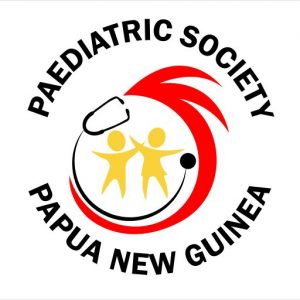Master of Medicine
Dr Edwina Baleo. Parents’ perspectives of adolescent sexual reproductive health in Port Moresby
A study of parental perception on adolescent sexual reproductive health in Port Moresby, Papua New Guinea. The study demonstrated that there is a need for parental support in improving adolescent sexual reproductive health of young people, as revealed by lack of awareness of adolescent sexuality rights, poor knowledge depth and communication capacity among parents interviewed. While parents were aware that adolescence was an important stage in a child’s life, during which guidance in decision making relating to sexuality is paramount, their depth of understanding of the aspects of sexuality that require attention in a child’s life were limited, including an obligation to ensure contraceptives are encouraged and made available to their children. Most parents based their preventative measures on messages of abstinence which has shown to be an ineffective preventative method. Hence there is a need for comprehensive sexual and reproductive health education amongst parents and adolescents in Port Moresby.
Dr Ian Kintwa. Factors associated with mortality in children with acute malnutrition at the Mt Hagen General Hospital in 2019
A prospective study of 150 children with severe malnutrition, investigating clinical and laboratory risk factors for death, measurable at the time of presentation. Children with a capillary refill greater than 3 seconds, tachypnoea, hypoxaemia, reduced conscious level and dysnatraemia (hypernatremia or hyponatremia) were significantly more likely to die. 13 children had prolonged capillary refill the odds ratio for death was 9. 18 children had hypoxaemia and the odds ratio for death was 30. 20 children had a GCS<13 and the odds ratio for death was 56. 28 children had dysnatraemia and the odds ratio for death was 4. To reduce acute malnutrition mortality, children presenting with capillary refill greater than 3 seconds, hypoxaemia, reduced conscious level or dysnatraemia should be identified promptly and given special attention.
Dr Violet Nigiria. “Tied for life”: Children with thalassaemia receiving blood transfusions in Port Moresby in 2020
A descriptive longitudinal-qualitative review of thalassaemia patients receiving blood transfusions in Port Moresby general Hospital in Papua New Guinea was carried out. 21 patients who were receiving blood transfusions and their parents were interviewed. There are important impacts of thalassemia on quality of life, as seen in school attendances and self-perception to illnesses. The genuine sacrifices and burden faced by the family were substantial. Issues faced by these families included their knowledge of thalassaemia, end of life discussions, parental concerns, family coping strategies and aspects of positivity about their illness. Most children were from southern coasts of Papua New Guinea. The affected families sacrificed a lot and migrated near hospitals that have blood bank services. Regular blood transfusions had increased the patient’s life span, however this can be improved further by regular monitoring of post-transfusion haemoglobin to maintain a hyper-transfusion state, combined with the introduction of chelation agent. Papua New Guinea need to develop prevention strategies of any birth defects by having the health policy makers aware of the global and local toll of birth defects with associated disabilities and family burdens and develop a genetic screening services for selected birth defects in hospitals, for risk assessment, genetic counselling and education of the family so reliable database for the country can be collected. Finally, provision of holistic and comprehensive care for patients and families with thalassaemia is essential including other children with birth defects.
Dr Joseph Ande. Approach to the diagnosis of tuberculosis meningitis in children admitted to the Port Moresby General Hospital
In Papua New Guinea childhood TB is a large burden and contributes substantially to child mortality, malnutrition and impaired neurological and cognitive development. Diagnosing tuberculous (TB) meningitis or central nervous system TB in low resource setting is very challenging. The study assessed the current practice of diagnosing children admitted to Port Moresby General Hospital in 2020. 50 children who were admitted with a diagnosis of CNS TB with no underlying prior cerebral lesions were enrolled in this study. The data were collected by interviewing the parents or guardians and from the admission charts. The median age was 45 months. The CSF microscopy result showed the typical picture of CNS TB or TB Meningitis with a very high lymphocytes with very high protein and normal glucose. More than 50% of the population studied had chest x-ray changes suggestive of TB. Gene x-pert detected more mycobacterium TB in CSF more than other samples collected for testing. Based on these results a standardised algorithm in diagnosing TBM in PNG can be designed to further improve detection, management and prevent comorbidities and deaths relating to TBM.
Diploma of Child Health
Dr Thomas Johns. The prevalence and risk factors for malnutrition in children attending outpatient clinics in Goroka town
In this study, amongst children attending urban clinics in Goroka, 14% had malnutrition. The risk factors associated with malnutrition were; village delivery and residence in a rural area. Other characteristics linked to higher probability of malnutrition were among children who resided in a settlement area, were being raised by a single parent, were adopted, lived in homes where the primary water source was from river supply, and partially vaccinated child and introduction of first feed less than 6 months. However these were not significant. Improvements to reducing rates of malnutrition can be achieved greatest through changes in socioeconomic status of women, ensuring children have a supervised delivery in a health facility where they are provided adequate counselling for basic nutrition amongst other necessary basic health advice, improving accessibility of primary health care to women and children has the potential to reduce the rates of malnutrition that we see in the province and the nation as a whole.
Dr Tracey Jeff. The severity and duration of hypoxemia in children with pneumonia in Mount Hagen Hospital
Pneumonia and bronchiolitis are the commonest cause of admission to the paediatric ward in Mt Hagen General Hospital associated with hypoxemia for the patients aged 1 month to 5 years. Many patients with pneumonia and bronchiolitis patients presenting with hypoxaemia seem to require longer hospital stay being on oxygen, and this is more commonly seen in the highlands. This study aimed to determine the time taken for hypoxaemia to resolve in children aged 1 month to 5 years, with pneumonia or bronchiolitis at Mount Hagen Hospital Western Highlands Province, Papua New Guinea, and to study the factors predicting prolonged hypoxaemia (SpO2<90% for more than 7 days) and the effect of comorbidities. Among 152 patients, 70 had clinical pneumonia, 20 had clinical bronchiolitis, and the rest had acute lower respiratory infection indistinguishable between pneumonia and bronchiolitis. The median SpO2 in air on admission was 78% (IQR 66-83%). The median days to resolution of hypoxemia was 2.5 days (IQR 1.5 to 5 days), 19.1% still required oxygen at 7 days, and hypoxaemia in all patients had resolved by 18 days. Hypoxaemia was more likely to be prolonged for those with underlying comorbidities. Most children who have just pneumonia or bronchiolitis do not require prolonged hospital stay for supplemental oxygen, while some do but their hypoxaemia resolves within 3 weeks. Better understanding of associated comorbidities and their management will help improve education on the use of oxygen therapy, understand disease progression and complexity and improve management of children with hypoxaemia.
Dr Vanessa Binene. Oxygen saturation reference values measured by pulse oximetry among children living at high altitude in Wabag
The use of pulse oximetry is now common in most clinical settings throughout PNG, and it is recognized as a fifth vital sign. The purpose of this research was to determine a reference value of healthy individuals from the age of 1 to 60 months living in Wabag District at about 2300m above sea level, and to determine any factors that can contribute to a lower oxygen saturation in children living that this altitude. There were 266 subjects analysed, the data were normally distributed. The lowest measured SpO2 was 82% and the highest 99% with a mean of 94.8% (SD 2.8%). The 95% CI was 94.5% to 95.1%. Younger children had a lower mean SpO2 than older children living at this altitude, which suggests physiological adaptation to altitude over time, even beyond infancy. Sleep had a lowering effect on arterial oxygen saturation, and babies in bilums whether awake or asleep had lower SpO2 compared to other children. While the clinical significance of this is uncertain, certain young babies may be more at risk of hypoxia and adverse events if asleep in a bilum, and if parents also smoke, and this requires further research.
Dr Ruth Jaye. Bacteria causing intravenous cannula-related thrombophlebitis and fever, and antibiotic resistance patterns, among paediatric patients at Angau Hospital
Thrombophlebitis and fever secondary to the use of intravenous cannula (IVC) is a common occurrence in children at Angau Hospital, and might be a cause of nosocomial infection and avoidable morbidity and mortality. This study was done to identify the causative organisms by doing cultures on IVC tips and identifying the antibiotic sensitivity and resistance of bacteria isolated. The study included children who had IVC during their hospital admission. All IVC tips were collected using a sterile procedure (wearing sterile gloves, sterile scissors to cut the cannula tip, and transport media). Cultures were done on all IVC tips and antibiotic sensitivities done on all isolates. The organisms in the IVC tips that are responsible for causing thrombophlebitis were identified, Gram negative bacteria were most common, especially Escherichia coli and Klebsiella species. These bacteria were resistant to many standard antibiotics.

